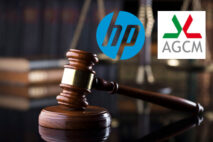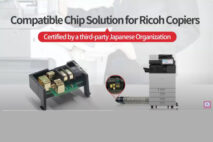The U.S. Supreme Court heard oral arguments yesterday in Lexmark v. Static Control Components. The justices will be deciding how to determine whether a party has standing to bring a false-advertising claim under the Lanham Act. Currently, different courts are using different systems or test to determine whether a company has standing to file suit (see “Supreme Court to Hear Lexmark and Static Control Components Arguments Next Month”). At issue is whether Static Control Components can sue Lexmark for falsely informing remanufacturers that if they used Static’s chips to remanufacture Prebate/Return Program cartridges they would violate the law and infringe Lexmark’s intellectual property.
Lexmark, who petitioned the Supreme Court to review the Sixth Circuit’s decision that would have allowed Static’s false-advertising claim to proceed, wants the Supreme Court to use the so-called AGC test, which defines who is allowed to bring such suits fairly narrowly. Static Control, on the other hand, believes it should be allowed to bring a false-advertising action against Lexmark and has argued that any commercial party like Static Control whose products are targeted by false advertising stands at the center of the zone of interests protected by the Lanham Act.
The standing issue and the various tests used to determine it is a topic mostly of interest to lawyers and legal scholars—and I am neither. Frankly, the parts of yesterday’s argument pertaining to different tests for determining standing make for some tough, dry reading, and that’s from a gal who has been known to enthusiastically crow to her colleagues and the occasional family member, “I just read the most delicious complaint ever!” Thus, fair warning must be given to those who wish to peruse the transcript of the oral argument, which has now been published.
On the other hand, seeing the storied Lexmark v. Static Control complaint reach the highest court in the land in itself is fascinating, and I cannot help but think the outcome of this case is hugely important for the printer and supplies industries. After all, either it will become a whole lot harder for a third-party component maker like Static who makes chips, toner, or other parts to bring a false-advertising claim against a printer OEM like Lexmark, or it will become a whole lot easier.
Chocolate Sauce and Chipsets
To us, perhaps the most interesting part of the oral argument were comments and questions that hinted at how justices, who may have been relatively unfamiliar with the third-party supplies industry, may view the case, and in particular, the tough questions they asked of both Steven B. Loy, who was representing Lexmark, and Jameson R. Jones, who was representing Static Control Components.
Justice Samuel Alito, for example, asked Mr. Loy if he would agree the manufacturers of cartridges that compete with Lexmark would have standing, and Mr. Loy concurred that remanufacturers would have standing and have brought such claims against Lexmark in the past. Justice Alito then pressed, “But it’s not a very big step from the manufacturer of the cartridge that competes to the manufacturer of the chip, which is really the essential component of —or an essential component of the cartridge that competes.” Mr. Loy responded, “Well, we think it is. And wherever the Court draws the line on standing, whoever is just on the other side of the line is always going to think that it’s too narrow.”
Mr. Loy argued that Lexmark sells cartridge with microchips, but it does not sell the microchips separately, and Static does not sell finished cartridges, and that if one parts supplier like Static were allowed to have standing, suppliers that make labels, toner, boxes, etc. would have standing as well. Justice Ruth Bader Ginsburg interrupted, “Well, then you could—you could sue them for infringing on your patent or whatever intellectual property protection you have. But here is an entrepreneur that says, we make a product and Lexmark is disparaging our product. It is essentially trying to get us out of this line of business. Certainly, if you just read the words of the Lanham Act, this is allegedly false advertising, and the false advertiser shall be liable to any person who believes he or she is likely to be damaged by such an act. That legislation seems to envision a very broad standing, certainly enough to encompass the person whose product is being disparaged.”
Justice Stephen Breyer, perhaps inspired by his own last name, proposed the hypothetical example of an ice cream shop called Bailey’s that sells sundaes and a rival ice cream shop disparages Bailey’s chocolate sauce, calling it poisonous. Justice Breyer asked Mr. Loy whether the chocolate sauce manufacturer should be allowed to have standing to bring a claim, seeing as that supplier is directly affected by the statement and is thus different from suppliers that may have supplied Bailey’s with cushions, heat, or electricity.
Mr. Loy argued that the chocolate sauce maker would not have a claim under the Lanham Act. He said that it is important that standing under the Lanham Act be interpreted narrowly. If not, he warned that, for example, a label manufacturer who supplies the aftermarket could file suit against Lexmark for statements such as the ones at issue in this case, arguing that if Lexmark hadn’t made those statements, remanufacturers would have sold more cartridges and the label supplier would have sold more labels. And that is essentially the crux of Lexmark’s argument: that if standing under the Lanham Act is granted more broadly companies would be deterred “from putting even truthful information into the marketplace for fear of facing lawsuits by remote parts suppliers.”
Mr. Jones, who was arguing for Static Control that, “This Court’s zone of interest analysis shows that parties whose goods are disparaged, either expressly or by necessary implication, must have standing to sue,” also faced tough questioning.
Justice Alito asked, “Suppose the comments in this case only disparaged the cartridges themselves and not the chips. Then would the chip manufacturer, would your client have standing?” Mr. Jones responded, “Yes, if the statements are about the legality of remanufacturing Lexmark’s printer cartridges, all of those statements are about Static Control’s products and the legality of using them … Static Control here makes microchips and parts that are specifically designed for the very commercial activity that this false advertising says is illegal. In that sense, Static Control’s goodwill and commercial relationships are all very closely and, by necessary implication, talked about in the advertisements.”
Justice Antonin Scalia asked Mr. Jones to explain how the disparagement of the “composite product” (i.e., remanufactured cartridges) is a disparagement of Static’s chips. Mr. Jones, replied, “The disparagement, the statements about the uses to which Static Control’s products may be put are all implicit in all of the false advertisements that are at issue in this case. When Lexmark says that remanufacturing our cartridges is illegal, even if it doesn’t mention Static Control in one particular advertisement, all of that goes to the subject matter and to whether or not Static Control’s products have lawful uses. “
Justice Alito followed up by asking if the statements did not even implicitly target Static Control but the effect of the statements drove Static our of business, would Static have standing then? Mr. Jones said it depended on the circumstances. A company might not have standing if there were other alternate uses and markets for a product, but in this instance, “Static Control’s microchips here only work for remanufacturing Lexmark printer cartridges.”
Justice Alito continued, pressing Mr. Jones about Justice Breyer’s Bailey’s ice cream hypothetical, asking if the competing ice cream parlor’s statement about the poisonous chocolate sauce drove one of Bailey’s ice cream suppliers out of business, if the ice cream manufacturer would have standing for a false advertising claim. Mr. Jones conceded that in this instance, the ice cream maker would not, but he contended that both the chocolate sauce maker and Bailey’s would have standing.
No Reading the Tea Leaves
Far greater minds than mine have tried and failed to guess the outcomes of various Supreme Court cases, so we are not attempting to read the tea leaves here. But it does seem clear why the Supreme Court decided to hear this case. SCOTUSblog deemed the standing doctrine a “morass” into which the high court was descending—a clear as statement as any that this muddy issue needed to be clarified.
It will be months before the Supreme Court issues its decision. Not only will the standing issue hopefully be resolved in a clear fashion, but also whatever the Supreme Court decides will determine whether Static’s false-advertising claim against Lexmark has come to an end or whether yet another chapter will begin in this decade-plus-long spat.






